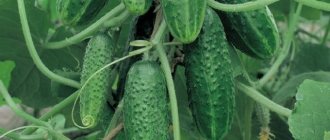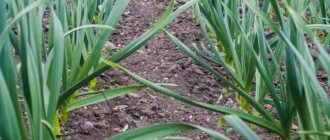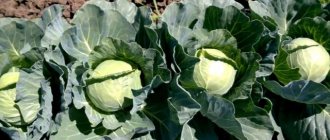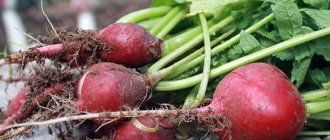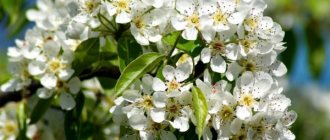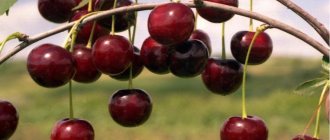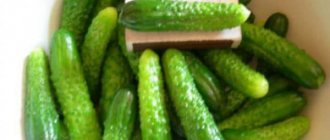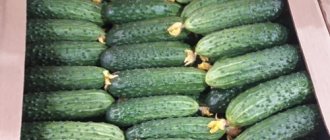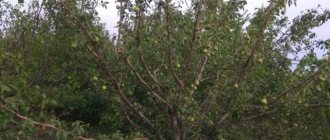Description of culture
Strawberry corn is a mid-season variety. The harvest is harvested every 80-90 days, from late summer to early September.
The ornamental crop has fibrous roots that penetrate deep into the ground to supply moisture. The stem is durable, and 2-3 ears are formed on it. The leaves reach 30-70 cm in length and 4-8 cm in width - they are thin and rough. During periods of heavy rainfall, shoots form on the lower part of the stem, which are removed for better formation of cobs.
The flowers have a unisexual structure:
- male ones in the form of a panicle are located at the top of the plant;
- female ones are formed in the axils of the leaves and have characteristic stigmas on thread-like columns.
One of the features of the decorative corn variety is its longevity. Dry cobs can be stored for a long time without spoiling.
Appearance
The plant reaches one meter in length. Thin green leaves have an oblong shape. The surface of the leaf is covered with white stripes. Decorative corn cobs are small, no more than 10 cm in length and 8 cm in diameter. The wide base turns into a narrowed top, which makes the corn look like a strawberry. Purple small grains have a slight point at the ends. The cob becomes visible from under the leaves already at the ripening stage.
There are other, no less interesting varieties of corn, including bright colored and blue Hopi.
Is it possible to eat: taste qualities
Corn is edible, it is consumed boiled - it is soft, juicy and sweet. However, most often grains are used to produce flour or cereals. After full ripening, the cobs are cut off and the grains are ground.
Due to the original color of the product, flour is used as a food coloring, adding it to various baked goods.
How did Glass Gem corn come about?
This “rainbow” corn was developed by American farmer Carl Barnes. It is interesting because one cob of corn can combine grains of various colors and shades. Therefore, it is not surprising that the breeder came up with such a beautiful name for the bred variety - Glass Gem, which in the Russian version sounds like Glass Gamma or Glass Pearl.
Carl Barnes's ancestors were Indians who grew corn. They grew many different varieties, including corn with unusual colors. A farmer from Oklahoma used this knowledge to develop his unique variety, Glass Gamma. Or, more correctly, to revive a long-forgotten variety.
Of course, everything turned out not as simple as in our story, because developing a new variety is painstaking work that requires a huge amount of time. Carl Barnes collected hybrid varieties of corn of different colors and crossed them through open pollination. Ultimately, he was able to achieve the desired result. Here it is - corn with multi-colored grains. Up close, they even have a pearly sheen.
Growing seedlings
- The seedling method of growing a heat-loving crop is best suited for cold regions.
- For seedlings, purchase paper cups 6-8 cm in size, at least 10 cm deep, and prepared soil is poured into them.
- Seeds begin to be planted in April.
- After a week, the first shoots appear, while the final formation of seedlings occurs after a month.
- In May, when the frosts recede, the seedlings are transferred to open ground. The air temperature should not be lower than 17°C, and the soil temperature should be 13-14°C.
Seed calibration and preparation
Proper preparation of seeds for sowing guarantees vigorous germination and protection from diseases:
- seeds are selected by appearance: grains with unhealthy spots and discolored are removed;
- calibrated planting material is disinfected using a solution of potassium permanganate or special preparations;
- the seeds are pre-soaked and left in water for 12-24 hours.
Treated and soaked grains will germinate faster and will be more resistant to external influences.
Soil selection
Garden soil is used to grow corn for seedlings. It is mixed with humus, making the soil fertile. Peat, manure and ash are also added to the substrate, which provides it with looseness. Hard soil is flavored with sand, but not more than 10% of the total volume.
How to sow?
- The harvested seeds are immersed to a depth of 2.5-3 cm in moist soil.
- Place 2-3 sprouted grains in one hole, cover with soil and water with water or a disinfectant fungicide solution.
- During planting, it is necessary to maintain the air temperature within 18°C.
After 7-8 days, the first shoots appear.
Planting methods
Strawberry corn is sown in the garden at the end of April, in early May, when the air temperature reaches 13 degrees. 3 grains are placed in each hole to a depth of 7 cm. The distance between plants should be no more than 40 centimeters. When the first shoots appear, 2 sprouts are left in the nest. The strawberry variety is wind pollinated.
In regions of Russia where summers are short, the crop is grown using seedlings. The grains, heated in the sun for several days, are sown to a depth of 3 cm in peat peas, filled with soil, sand and compost, and wood ash is added to the mixture. Seedlings are fertilized once every 8–10 days, and the soil is regularly moistened.
Growing in open ground
Growing a decorative species is no different from planting conventional varieties of cereal crops. Corn is grown in open ground in southern regions with warm climates. The start of sowing is tentatively scheduled for the end of April, when the soil warms up to 13°C. For a bountiful harvest, the land is fertilized in the fall, adding phosphates and organic matter.
Proper growth is promoted by fertile, mineral-enriched soil. The place for planting corn should be sunny and protected from winds. First, the soil is dug up, fertilizers are applied and watered.
Considering that the growing season of corn lasts quite a long time, in the northern regions the crop is cultivated only by seedlings. Cool summers, high amounts of precipitation and sudden temperature changes can negatively affect the development of corn.
Which location on the site should I choose?
The best place for growing grain crops will be the area where they grew:
- potato;
- beans;
- beans;
- alfalfa.
After harvesting the previous harvest, it is recommended to carefully dig up the ground and get rid of old tops. The heat-loving crop needs an unshaded place on the south side of the site. Corn is a wind-pollinated plant, so it is recommended to form mass plantings. A large number of bushes around will ensure abundant formation of grains on the cobs.
When using the crop for decorative purposes, it is necessary to remember that the growth of the plant can be higher than the flowers in the flowerbed, so it is best to plant corn to form a general background.
Landing
Before sowing, the grains are heated in the sun and then left to soak in water. It is not recommended to thicken plantings. Grains are planted in open ground as follows:
- 40 cm are left between the holes, while the distance between the rows should be at least 60 cm;
- corn seeds are buried 5-6 cm;
- Several grains are placed in one hole to ensure germination.
After the sprouts appear, they are thinned out two weeks later, leaving two shoots.
Growing conditions for strawberry corn
Southern culture needs enough warmth for development and a long summer. The seedlings suffer even with minimal positive thermometer readings. Unripe cobs also stop developing after autumn frosts. In addition to these factors, corn grows well in the following conditions:
- fertile loose soil;
- the plot is sunny, without the slightest shading;
- for the cob harvest, corn, as a wind-pollinated crop, is planted en masse;
- the best predecessors are legumes, forage grasses, potatoes.
When growing strawberry corn as an ornamental crop, when planting plants, take into account that they will be tall and can shade other flowers in the flowerbed.
Care
The decorative variety of corn does not require special care, however, to obtain a stable harvest and protection from diseases, it is necessary to regularly carry out agricultural work:
- loosen the soil to saturate the soil with oxygen;
- weeding;
- thin out sprouted plantings;
- Fertilize periodically.
The plant needs a complex of fertilizers, including:
- phosphorus;
- magnesium;
- nitrogen;
- potassium;
- zinc;
- sulfur
Nutrients contribute to the active formation of cobs. After the appearance of side shoots, it is recommended to carry out the pinching procedure, then the cobs will grow large.
In the summer, during flowering, corn is fertilized; it is during this period that it needs feeding. When growing crops in central Russia, no additional watering is required; natural precipitation is sufficient for corn to grow and develop.
In dry summer conditions, the plant can be watered by pouring water between the rows, protecting the roots from being washed away.
Caring for ornamental corn
If the location is chosen correctly: there is enough sunlight and there are no cold drafts, then minimal care will be required for the plantings.
Necessary activities:
- Watering. Produced as the soil dries. With each watering, add at least 10 liters of water under the plant.
- Feeding. Irrigation is often combined with soil fertilization. Complex preparations are mixed with water for irrigation according to the instructions.
- Removing weeds promotes the harmonious development of ornamental species. Therefore, the beds should be kept clean or mulched.
Fertilize decorative corn at least twice per season: during flowering and after the formation of young ears. For such feeding, 1 tsp is enough. nitroammophoska per plant, diluted with 10 liters of water. Ornamental corn varieties are very sensitive to soil acidity. If it is necessary to restore the neutrality of the soil, calcium preparations or slaked lime are added to the digging in the fall or spring.
Attention! Varieties with bright, colored leaves are especially in need of nutrition.
With a lack of phosphorus, the leaves turn brown; without nitrogen, they begin to dry out. A lack of potassium will manifest itself as “burnt” edges and dried out lower leaves that are brown in color.
Side shoots that appear on the trunk should be carefully removed. Strawberry corn and any types of ornamental cereals are periodically treated with systemic fungicides to prevent pest attacks.
Diseases and pests
Strawberry corn exhibits instability to fungal diseases:
- bubbly smut - large gray swellings appear throughout the plant, reaching 15 cm, they are located on the leaves, stems, cobs and lead to the death of the crop;
- dusty smut - black sooty masses form on the cobs, which lead to damage to the crop;
- fusarium - manifests itself in the form of a pink coating spreading over the entire surface of the crop;
- stem rot - usually appears at the end of summer, while the stems become pink and soft, become covered with spots and subsequently die.
Before planting in the spring, the soil must be disinfected and the seeds treated with fungicides. Suitable for this purpose:
- universal "Granivit";
- contact and systemic action drug “Lanta KS”;
- combined disinfectant "Vitavax".
Corn is attacked to a small extent by harmful insects. It can be:
- Swedish flies;
- root aphid;
- bollworm
In case of significant damage, chemicals are used to control pests, such as the broad-spectrum insecticide Ditox.
Prevention and treatment of diseases, pest control
The main diseases of corn are smut, rust, spot, and nigrospora.
Also harmful are pests such as corn stem borer, cotton bollworm and grain bollworm. To prevent the development of the disease, you need to constantly monitor and care for the plant. Pests can be controlled chemically (using insecticidal preparations) and biologically (using their natural enemies against pests). Important! When using the chemical method, you should use products that do not affect the natural fauna. Thanks to the variety of varieties, corn can be used in various ways
So, from golden grains they produce flour, starch, oil is squeezed out, alcohol is made, as well as feed for farm animals. To ensure a good harvest, do not forget about the importance of timely plant care
Thanks to the variety of varieties, corn can be used in various ways. So, from golden grains they produce flour, starch, squeeze out oil, make alcohol, as well as feed for farm animals
To ensure a good harvest, do not forget about the importance of timely plant care
vote
Article Rating
Harvesting
Harvesting, which will subsequently be used as food, takes place from August to mid-September. Then the corn reaches the stage of milky ripeness, which makes it suitable for use in cooking. The readiness of the cobs can be determined by the white liquid released from the grains when pressed.
Cobs that have been picked for consumption are stored in the refrigerator. Technical ripeness of corn occurs in early autumn. The hardened cobs are broken off and stored in a dark room with good natural ventilation.
When dry and solid, grains can be stored for several years.
Applications of Strawberry Corn
Strawberry corn grains in milky ripeness are sweet and soft; they are eaten boiled. Flour made from strawberry grains with a reddish tint; it is added to dough for various confectionery products. The grains are also ground into cereal. Unripe cobs and green mass are used as livestock feed.
The culture is considered an ornamental plant:
- the variety is planted as an original decoration for spacious landscape-style flowerbeds - up to 5-10 plants together;
- a wall of corn will serve as an interesting hedge;
- Strawberry with long leaves of rich green color with white stripes forms an iridescent background for the foreground flowers;
- Strawberry cobs in the ripening phase are also beautiful, since they are half-opened from the wrappers, their dark shade is visible;
- Dry cobs are used as decorative elements for winter bouquets.
Application
During the period of milk maturity, corn is harvested for consumption. When unripe, the cobs are given to livestock feed (read about other fodder varieties of corn here). The plant is considered decorative, so it is very often used for other purposes:
- dried, used to make autumn bouquets;
- planted densely in large flower beds to complement the composition;
- a crop sown in the form of a wall acts as a bright and interesting fence;
- A plant with green leaves with white stripes located along the fence becomes an excellent background for a variety of flowers.
There are many other varieties of corn, and the most popular of them are sweet corn. Read about such sweet varieties as Sweet Nugget F1, Summer Sweet F1, Pioneer and Lakomka Belogorya.
Strawberry corn does not require special care; it needs to be provided with a large amount of sunlight and protection from the wind. Compliance with all agrotechnical rules will ensure a good harvest, and the appearance of the original crop variety will decorate the summer cottage.
Application of decorative corn
Decorative corn is universal in use. Several ways to use different parts of the plant:
- Bright foliage decorates beds and flower beds throughout the summer.
- The amazingly colored cobs are added to dry bouquets and included in room decor.
- The leaves are dried for weaving, creating appliqués and artistic panels.
- The apical spikelet inflorescences are also decorative. Bouquets of them can serve as interior decoration for more than six months.
Warning! When designing park areas and gardens, the illumination of the site should be taken into account.
Shading of ornamental corn plantings by tall plantings or buildings is unacceptable. When planting near flowers or vegetable crops, take into account that the growing bushes also block the sun.
The beauty of certain types of cereals does not negate their nutritional value. Ornamental types of corn are used as usual: for cooking or as food for pets.
To eat milk cobs, they are boiled for about an hour and served with butter, salt or without additives. The ripe, firm grains are ground into flour for use in baking. Decorative varieties can paint baked goods in a variety of colors. Thus, adding strawberry corn flour gives the dough a pleasant pink tint.
Characteristics and description of varieties
The following varieties of multi-colored corn are grown in the vastness of our country:
- Early pink glow. Extra early variety of corn. The harvest can be harvested three months after sowing. It grows no more than 1.2 m in length, the cobs are pyramid-shaped, about 15 cm long, the grains are colored lilac-pink, and have a pleasant sweet taste. Corn is suitable for consumption in boiled form.
- South America . Reaches a height of 2.5 m, the length of the cobs is 22 cm. The grains have a variegated color. The cobs are used for decoration, making popcorn and flour.
- North America. The grains have a lilac-chocolate hue. The stem grows up to 1.8 m in length.
- Mother of pearl . Mid-season variety, grows up to 2.2 m in length. The ears are 14 cm long and have a slightly rounded pyramidal shape. The shade of the grains is white-lilac with a pearlescent tint. The cobs are eaten boiled at the stage of milk maturity.
- Magic kaleidoscope . Grows up to 1.8 m. The cobs contain grains of white, yellow, brown, orange and black colors. Propagated using seedlings, which are planted in open ground in early May. Loves sun and good drainage.
- Strawberry . An ornamental variety, it has ears of an interesting shape with sharp red grains. The crop loves warmth and grows best in regions suitable for growing sweet corn. The harvest is harvested in late August - early September. The cobs are shaped like berries or cones. Milk ripe grains have a sweet, pleasant taste and can be eaten. During the period of intensive growth, the crop needs to be fertilized with nitrogen, phosphorus and potassium. Suitable for creating hedges.
- Amero . The variety is grown in open ground in regions with a sufficient number of sunny days. Suitable for consumption at the stage of milk maturity. The variety tolerates drought well, but with a lack of life-giving moisture, it loses its decorative properties. The grains are colored in yellow, dark orange, brown and golden shades.
- Mosaic . The variety has decorative ears with grains of black, white, gold and brown colors. They are grown in the fertile soils of the southern regions. Corn is used to create decoration.
Outside Russia, the Purple Maize variety is widely known. This corn has grains the color of ripe blackberries due to the presence of special pigments - anthocyanins. It has medicinal properties and is cultivated over large areas in Peru.
Hopi corn is grown in Mexico and the southern United States. Its kernels are dark blue in color, have a low glycemic index compared to yellow corn, and have antioxidant and anti-inflammatory properties.
Colored corn - fiction or reality
Those who have never seen corn with kernels painted in all the colors of the rainbow will most likely think that a Photoshop wizard worked on the images. In fact, such varieties have existed since time immemorial.
Corn is an ancient crop that was grown by the indigenous people of North America and used as animal feed. And the multi-colored varieties developed relatively recently are just well-forgotten old ones. Each cob is completely unique. If you take several pieces for comparison and carefully examine the drawing, you will notice that the color combinations are not repeated and the grain size is different.
The Spanish Franciscan Bernardino de Sahagún, in his memoirs of visiting Indian tribes, describes corn cobs of amazing beauty with black, blue, red, white and yellow kernels. The culture quickly spread throughout Europe, but gained the greatest popularity in Japan and China.
In the USSR, corn began to be cultivated during the reign of Khrushchev, who tried to rapidly introduce it into agriculture . At that time, preference was given to sugar varieties with yellow and orange grains. The main task was to solve the problem of shortage of animal feed and at the same time increase profitability, and no one cared about the decorative function.
